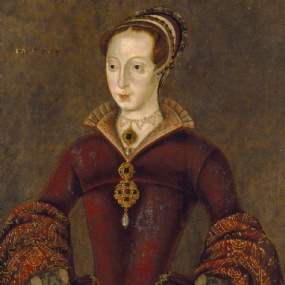Mary’s Antagonist

Mary’s Antagonist
By Alice Shelley
The noun ‘antagonist’ means a person who actively opposes or is hostile to someone or something. In literary terms, it is a character in a story who is presented as the chief enemy of the protagonist (main character).
In Tudor England, power was everything and you would use anything to gain it. Even the life of the first Queen of England. This is the story of Lady Jane Grey, the first female monarch of our country.
Our story starts on the 21st of June 1553, King Edward VI (Henry the VIII’s only son) is dying of tuberculosis at the youthful age of 15. Without heirs, Edward (or rather the powerful courtiers around him) must decide on a successor. Edward has two elder sisters, Mary and Elizabeth. Mary was born to Catherine of Aragon, Henry’s first wife, divorced due to her lack of fertility. Unfortunately for her, Mary was catholic. Edward and his father spent most of their lives reforming the country to Protestantism and away from Catholicism. Elizabeth was Protestant and close to Edward during their childhood, however she was younger than Mary and her mother, Anne Boleyn, was executed for ‘adultery’. In Tudor eyes, neither sister was deemed right for the throne.
Enter Lady Jane Grey, cousin to Mary, Elizabeth, and Edward. Jane was a protestant from a very respected family and a direct descendant of Henry VII. Lady Jane Grey was married to Lord Guildford Dudley making a man named John Dudley, her father-in-law. John Dudley, a political megalomaniac, realised the situation Edward was in and handed his daughter-in-law over without hesitation. Jane was reluctant to agree (keeping in mind the endings of many Tudor monarchs and consorts) but was persuaded by, I imagine, threats of violence.
It’s now the 10th of July 1553 and Edward has been dead for three days. It is on this day that Lady Jane Grey was declared Queen by the council. It seemed nobody but the council was happy about this. The new queen reportedly had no say in the matter and Mary and Elizabeth were infuriated. To them it was their birth right, their brother's crown, not to be stolen by some teenage cousin. Many people supported the Princess’ and so Jane, having just become the new ruler, was now also enemy to thousands.
Nine days later, Mary Tudor gathered an army of 15,000 to rally. Jane had no hope of defeating Mary and staying Queen. Although later known for her brutality, Mary decided to be considerate. She didn’t want to kill Jane to overthrow her, perhaps seeing the innocence of Jane, so she left her be. However, Grey had supporters of her own (unwanted but still there) and to Mary this means threat. To keep the crown on Mary’s head she had to execute Jane along with her husband and father-in-law.
Jane’s story ended on the 12th of February 1554 when she was just 16. We can understand that Jane had no control over her own life. She was a pawn in her father-in-law's game of chess. Jane helps us learn that the power of our voices is stronger than any other power humans possess. If she was allowed to use her own voice, she would have lived the long and ordinary life that she craved so much.
Have the courage to use your voice - it may just save your life.



